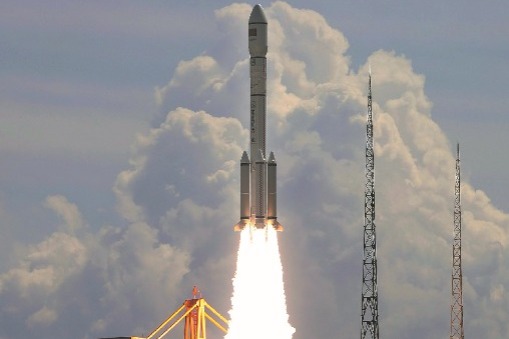
The Long March 6A rocket will be launched from Shanxi province on Tuesday. ZHU XINGXIN/CHINA DAILY
A group of 18 communications satellites, the first shipment of the planned Qianfan network, was launched into orbit on August 6 by a Long March 6A rocket from the Taiyuan Satellite Launch Center in Shanxi Province.
As its name suggests, the Qianfan constellation is a satellite-based communications network that provides its users with communications services directly from the satellite, rather than communicating through base stations as is the case today. Compared to base stations, which are often located in populated regions rather than deserts, forests or by the sea, and whose signals are obstructed by mountains, the satellite-based network sends electromagnetic waves more effectively to these less populated regions, so its users do not have to worry about their mobile phones receiving weak signals.
In addition, communication companies provide global services in many countries, but when users travel far, they rely on local service providers. With the satellite-based communication network, communication companies can provide services to their users in every corner of the world.
That is why satellite-based communication networks have long been a hotly debated area of research. As early as 1987, Motorola developed its Iridium satellite constellation and planned to arrange 77 satellites around the globe for communication. The project failed due to prohibitive costs, but today the situation is completely different, as new technologies have reduced costs and complexity and it is now possible to launch 18 satellites on one rocket.
In addition to Elon Musk’s famous Starlink plan to launch over 40,000 satellites into space, the Qianfan constellation reportedly aims to launch 108 satellites within the year and bring the total to over 10,000 by the end of 2030.
Space is unlimited, but low-earth orbit positions and corresponding electromagnetic wave frequency channels are limited, and only those with higher technologies can gain an advantage here. China can use its potential to make the astronautics sector flourish, while demanding regulation of the use of space resources so that different plans can compete healthily rather than rival each other.

